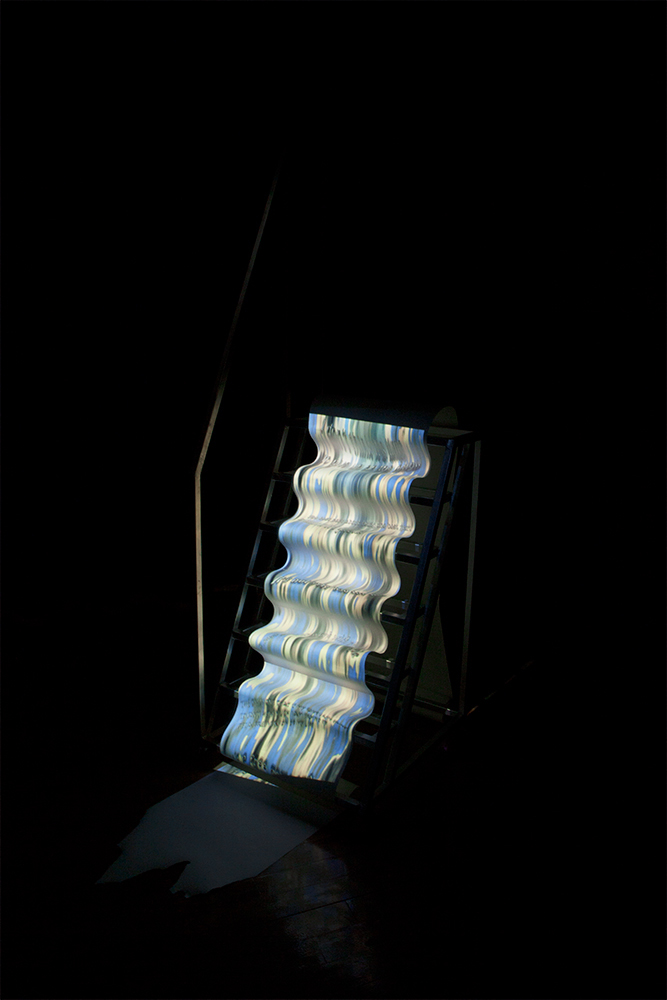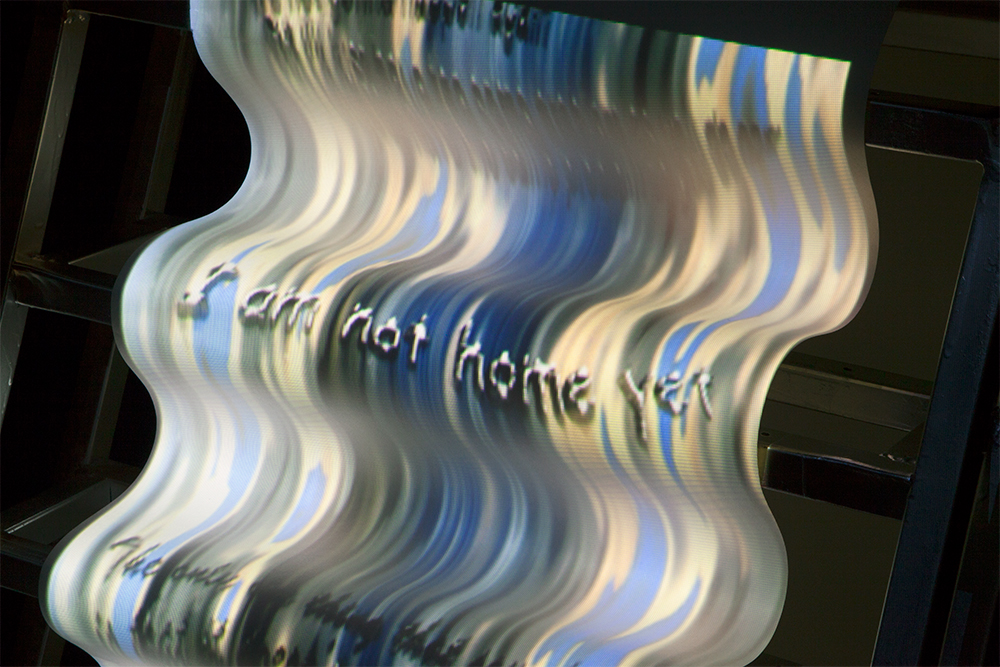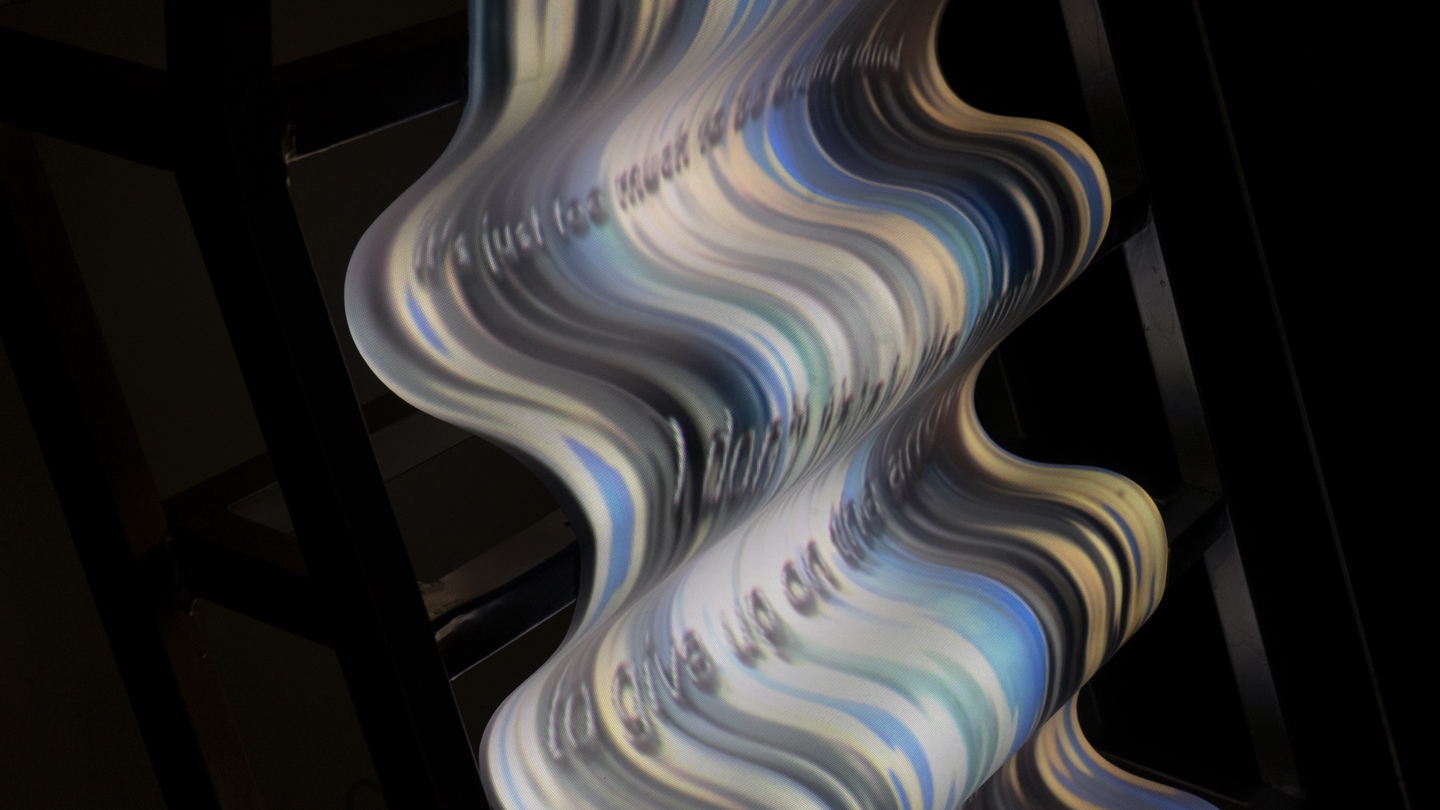I, It’s, The
dimension variable
animation (silent, 8 min), projection mapping, canvas scroll, metal structure on wheels, dead clock
Purple, blue, green — “subway…make.every..effort.cannot.attend…” the rhythmical form of a random email called for my attention. The color codes and the broken sentences constitute a kind of visual musicality enacted by the standard email format when previous correspondences are forwarded and embedded in the current one.
Intrigued by this serendipitous configuration, I started to recreate the situation, i.e. writing an email. I started a process that uses the Quick Typing function embedded in smart phones to make sentences and email correspondences to myself. The process thus becomes a dialog between myself and the consumer-grade artificial intelligence system that enables the quick typing function. “I, It’s, The” were the first three words that the message app suggested I start a conversation with (dialog starter). The Quick Typing function would keep suggesting new three word sets without exhausting itself. Following this process, it took 50 attempts before the dialog starter changed its opening approach into something new.
The AI-enacted language is informed by my own habits of using language (recording all typing interactions with the phone). The act of communicating with “sometimes-me” skews the boundaries between human and machine, line by line. To and fro, the textual process unites body and machine while prioritizing neither entity. The final collage of text is illogical, whimsical, and sometimes contradictory, for example: “The only one thing that sounds good is that it doesn’t sound good”.
Bakhtin posits that “the ideological becoming of a human being… is the process of selectively assimilating the words of others.” During the process of I, It’s, The, the human being cedes partial authorship to the machine, while the machine is tasked with assimilating the partially human. I, It’s, The enables the becoming of a posthuman body, during which the “self” dilutes.
The installation is informed by the metaphor of “water” as fluid consciousness, and “cascade” as a form of linear process which includes (without being limited to) thinking, reading, and writing.
Lines generated out of the “I, It’s The” process are made into various typographic logs floating in the 3D-simulated water animation. As visual poetry draws the reader’s attention to the material production of the text and how a text might be constrained by its material conditions, the visual letterforms create a visual field in which all parts are tangential to the whole, which is, in turn created as a figure from their efforts, their direction, their non-alignment (Cristofovici). The use of an ornate typeface creates a visual continuity between the text and its net art ancestors, while the chaotic syntax of the lines and their many “entendres” suggest an entirely alternative and not-yet-defined signifier. It looks familiar but not really.
Like the scrolling gesture used in mobile phones for reading, the flow of text is animated to float up which is against the natural/common expectation of a waterfall, as if mind data is cascading free from gravitated linear conventions. Corresponding to different sensual registers, the visual textual flow that contains the illogic syntax of the lines is subject to a purely decorative prosody, just as the entangling capacity of human mind and artificial intelligence is constrained in meaning-becoming.
2017



